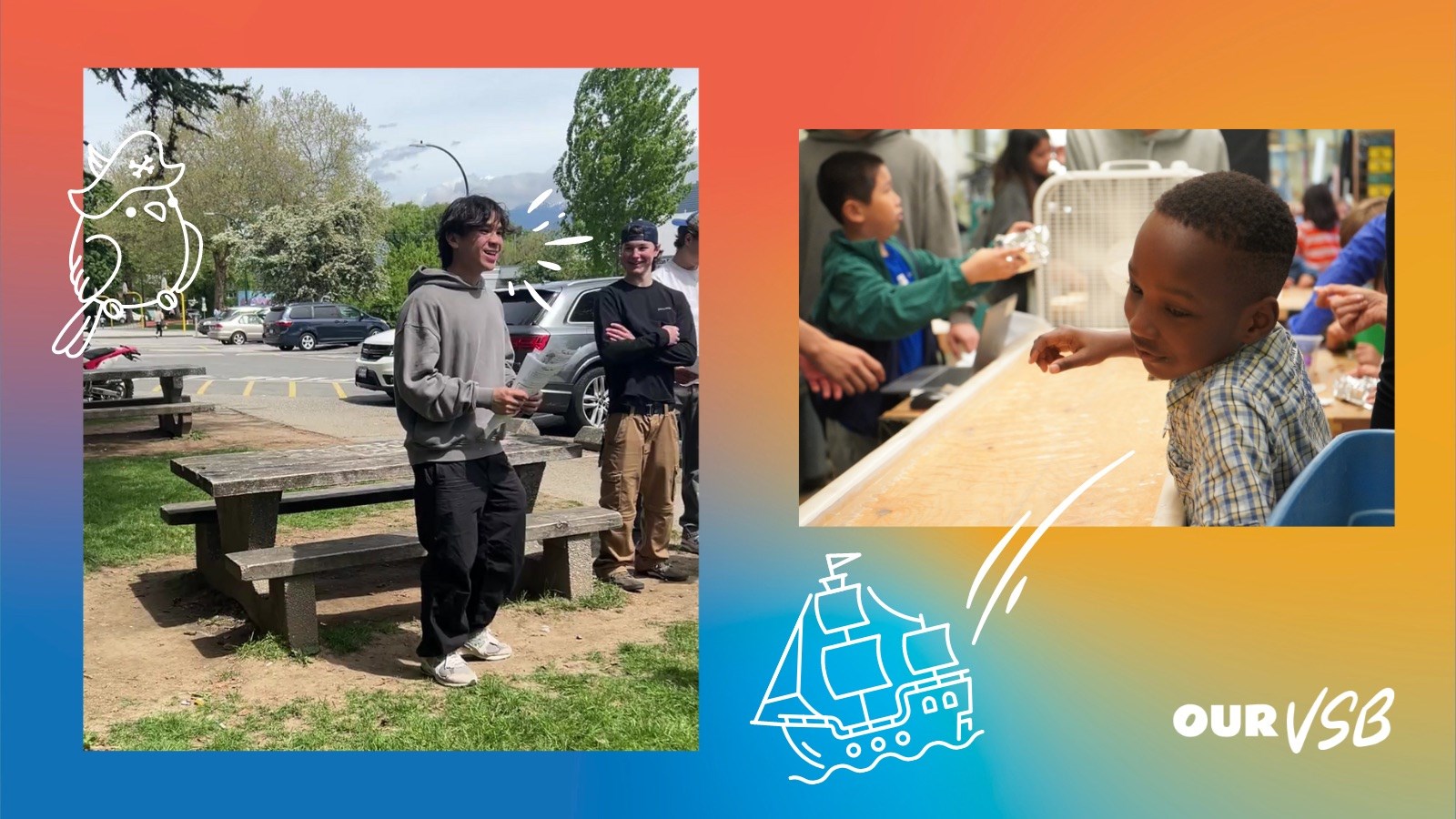Student Perspective: ADST and STEM at Templeton

Peer mentorship is very important in the education space. This school year STEM 12 at Templeton Secondary welcomed 600 students from elementary schools all over the District. The Grade 10-12 students led their younger counterparts through an ADST workshop with hands on experiments and a pirate theme.
The elementary school students enjoyed a field trip to Templeton Secondary and tried three different activities. The activities were building boats made from aluminum foil and racing for the fastest time, engineering longest pirate plank, writing a sea shanty, and calculating how many coins were in the treasure.
ADST programs help develop students’ ability to be more creative and think critically at all ages. VSB spoke with Steven, a Grade 12 Templeton student and one of the leaders for the day to learn more about his experience as a STEM student at Templeton.
VSB: For those who don’t know, how do you describe ADST?
Steven: So ADST is Applied Design, Science and Technology. It's applying the technology aspects, like our coding, our computer systems – the internet of things – onto science and math part of [learning].
VSB: As a student, what do you think it’s important for people to know?
Steven: I think project-based learning is very important for innovating inside of our education space.
VSB: What are we doing for this event?
Steven: So today we have a STEAM project, which stands for Science, Technology, Engineering, Arts and Mathematics. We're doing a variety of projects around a pirate theme, so that we can get the kids super excited and enthusiastic about projects, while also applying the engineering design process. Which is reiterating their previous design to improve by changing a variable.
VSB: What made you want to do this?
Steven: For many reasons, number one is that a lot of the math and science we learn is project based. Project based learning is very good [because] in a regular classroom you would look at a board with a bunch of numbers and a textbook.
But in here, we're doing the same math, the same science, but we're applying it to a project, which allows us to retain the information that we learned. So [in] the next year I would still memorize all the stuff that I did the previous year because I could actually apply it onto a real project and something in the real world.
VSB: What are the challenges in this kind of education?
Steven: The challenges were that in elementary school, typically I would learn from the textbooks and then I would see the numbers and apply it down. Trying to move it over here where I did a lot of the more engineering and ADST, more of the applied skills. It was a bit harder to try to connect the math and science that I learned from elementary school onto the stuff here because it's more problem solving and more real world.
But after a few years I got the hang of it and it was really amazing to see all the math and science that I were to learn in a regular classroom onto a real project like making a solar panel car or making a filter or a variety of projects.
VSB: What is it like working with young kids on these projects?
Steven: Working with young kids is much more amazing. I work with a lot of kids, and I see that kids, they're more hands-on learners. They are very energetic. When they can actually apply what they're learning onto a project, onto something they can touch and feel; something more tactile, instead of just pen and paper, they have more engagement, which actually helps with their learning retention. And it's amazing to see what they can remember after their projects.
VSB: Is it hard for them to get to understand the engineering process?
Steven: At first, when I did a PowerPoint presentation to a classroom, it was pretty difficult for them to understand. But after they built their first design and they saw what they needed to improve on this design, they instantly got it.
VSB: Do you see yourself using these skills once your graduate?
Steven: Oh, yeah, a whole lot. Currently a lot of my friends in university have been telling me about similar projects they did in the STEM program, how it transferred over to university. Since I'm going to engineering, I'm looking at a lot of the engineering programs in university. Their capstone projects and projects they do inside of their classrooms are very similar to the one that we do here. Like our Arduino, our ADST, and our technology. The stuff that we do here is easily applied to the stuff we [will] do in university.
Thank you to the students at Templeton for teaching and supporting the different elementary classes. To learn more about ADST from the teacher perspective, listen to our podcast below!

